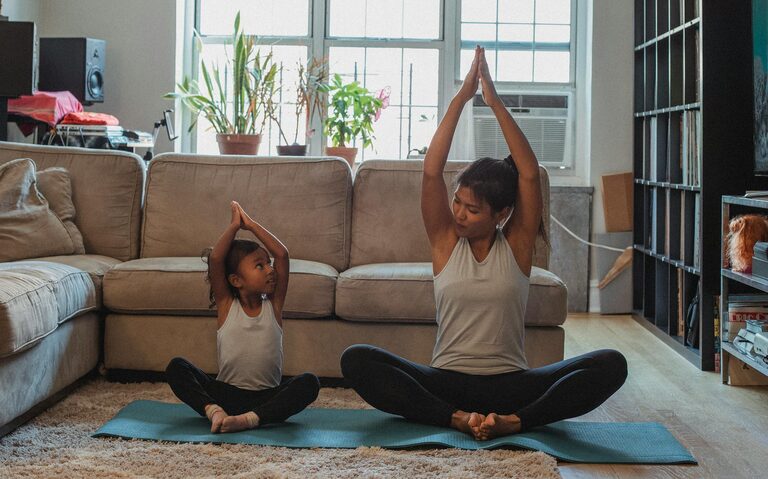Stretching is a fantastic way to enhance your flexibility, reduce muscle tension, and improve posture—all from the comfort of your own home. Whether you’re new to physical activity or simply looking to add a healthy habit to your daily routine, stretching is accessible and beneficial for everyone. This beginner’s guide will walk you through the basics of stretching at home, help you understand its benefits, and provide easy-to-follow routines.
Why Stretching Matters
Stretching isn’t just for athletes or yoga enthusiasts—it’s an essential practice that supports overall health. Here’s why incorporating stretching into your regular routine is worthwhile:
– Improves Flexibility: Stretching increases the range of motion in your joints, making everyday movements easier.
– Reduces Muscle Tension: Regular stretching relieves tight muscles, which can reduce discomfort and stiffness.
– Enhances Circulation: Stretching helps blood flow to your muscles, promoting faster recovery and better muscle health.
– Boosts Posture: Stretching muscles around the spine and shoulders can improve alignment and reduce slouching.
– Prepares Your Body: Stretching warms up muscles before physical activity, lowering the risk of injuries.
– Relaxes the Mind: Gentle stretching can also serve as a calming practice, helping you reduce stress.
Getting Started Safely
Before you begin, keep these safety tips in mind to ensure a positive experience:
– Warm Up First: Stretch after light activity like walking in place or marching for 3-5 minutes to prepare your muscles.
– Avoid Bouncing: Stretch in a slow, controlled manner without bouncing to prevent injury.
– Listen to Your Body: Stretch to the point of gentle tension, never pain. If it hurts, ease back.
– Breathe Deeply: Maintain steady, even breathing throughout each stretch.
– Be Consistent: Aim to stretch at least 3-4 times per week to see noticeable improvements.
Essential Stretching Exercises for Beginners
Here is a selection of simple stretches targeting major muscle groups. Hold each stretch for 20-30 seconds and repeat 2-3 times.
1. Neck Stretch
– Sit or stand tall.
– Slowly tilt your head toward one shoulder until you feel a stretch on the opposite side of your neck.
– Hold and repeat on the other side.
2. Shoulder Stretch
– Bring one arm across your chest.
– Use your opposite hand to gently pull the arm closer to your chest.
– Hold and switch sides.
3. Chest Opener
– Clasp your hands behind your back.
– Straighten your arms and lift your chest while squeezing your shoulder blades together.
– Hold and release.
4. Seated Forward Fold
– Sit on the floor with legs extended straight.
– Keeping your back straight, slowly bend forward from the hips, reaching toward your toes.
– Stop when you feel a stretch in your hamstrings and lower back.
5. Cat-Cow Stretch
– Start on hands and knees in a tabletop position.
– Arch your back (cow) and lift your head and tailbone toward the ceiling.
– Then round your back (cat), tucking your chin and tailbone.
– Repeat slowly 5-8 times.
6. Standing Quadriceps Stretch
– Stand tall and hold onto a wall or chair for balance.
– Grab one ankle and gently pull it toward your buttocks.
– Keep your knees together and hips forward.
– Hold and switch legs.
7. Calf Stretch
– Stand facing a wall with one foot behind the other.
– Press your back heel into the floor while bending the front knee.
– Hold the stretch and switch sides.
Building a Routine You’ll Enjoy
The key to benefiting from stretching is making it a habit. Here are some tips:
– Set Aside Time: Dedicate 10-15 minutes daily or every other day for stretching.
– Combine With Other Activities: Stretch after workouts, walking, or any physical activity.
– Use Relaxing Music: Play gentle tunes to create a calm atmosphere.
– Track Your Progress: Notice improvements in flexibility and comfort to stay motivated.
– Mix It Up: Explore new stretches as you grow more comfortable.
Helpful Tools for Stretching at Home
While you don’t need any equipment, a few items can enhance your practice:
– Yoga Mat: Provides cushioning and grip.
– Stretching Strap: Helps deepen stretches, especially for hamstrings.
– Foam Roller: Can be used before or after stretching to release muscle knots.
– Pillows or Blocks: Support your body in various positions for comfort.
When to Seek Professional Advice
If you experience pain during stretching or have specific health conditions, consult a healthcare professional or certified trainer. They can help tailor a safe stretching routine to meet your individual needs.
Conclusion
Starting a stretching routine at home is a simple, effective way to improve your flexibility and overall well-being. With just a few minutes each day, you can enjoy less muscle tension, better posture, and a greater sense of relaxation. Remember to be patient with your body and enjoy the process of becoming more flexible and comfortable in your own skin.
Happy stretching!

